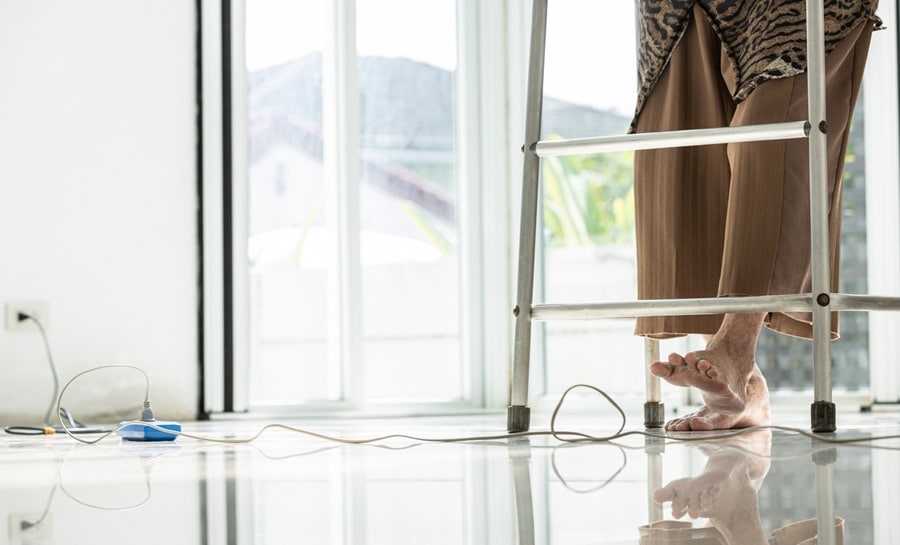Safety First: Proactive Fall Prevention Solutions For Your Loved Ones
In our rapidly changing world, it’s remarkable how people have developed ingenious methods to prevent problems before they arise. To keep us safe, proactive solutions have been developed to safeguard various aspects of our lives, from daily activities to digital security.
Think about helmets, seatbelts, and antivirus programs– they’ve become ingrained in our regular routines. But have you ever wondered who came up with these concepts to ensure our safety? A more pressing question: How can we apply these forward-thinking solutions to address the critical issue of fall prevention, especially for those most vulnerable?
Advancements in Ensuring Safety:
Helmets When Riding Bikes:
The widespread use of helmets by cyclists showcases a commitment to personal safety. Back in the 1970s, medical research highlighted the severity of head injuries caused by bike accidents. This spurred governments and advocacy groups to promote helmet use through education and laws. Today, helmets are an integral part of our safety practices, significantly reducing head injuries and saving countless lives.
Research from the National Institutes of Health confirms that helmet usage lowers the likelihood of head injuries by 48%, serious head injuries by 60%, traumatic brain injuries by 53%, face injuries by 23%, and overall cyclist injuries or fatalities by an impressive 34%.
Seatbelts When Driving:
Seatbelts are a cornerstone of road safety, reflecting a proactive stance in preserving lives. Pioneering research in the 1960s illuminated their life-saving potential, sparking a transformation in safety practices. As evidence mounted, laws mandating seatbelt use while driving were enacted, accompanied by educational campaigns emphasizing their crucial role. Over time, seatbelt usage became habitual, significantly reducing injuries and preventing fatalities.
The National Highway Traffic Safety Administration shared that in 2017, an estimated 14,955 lives were preserved due to the diligent utilization of seatbelts. Furthermore, an additional 2,549 lives could potentially have been spared had seat belts been employed as intended. These statistics underscore the compelling efficacy of seatbelts in mitigating harm and curbing preventable tragedies on our roads.
Safeguarding Against Digital Threats:
The digital age brought with it new challenges, necessitating proactive solutions in the realm of cybersecurity. As personal computers gained widespread use, the risk of malware and cyberattacks escalated. Antivirus software emerged in the 1980s, initially designed to counteract malicious code. Over time, this software evolved to combat increasingly sophisticated threats, incorporating real-time scanning, robust firewall protection, and behavioral analysis. Today, antivirus systems serve as a fundamental defense against a diverse array of cyber threats.
Surprisingly, the costliest digital virus to date translated to an inflation-adjusted $52 billion. Coupled with businesses collectively spending about $55 billion annually to counter these threats, the role of antivirus software becomes clear. It serves as a crucial safeguard, preventing businesses from enduring crippling financial consequences due to digital intrusions.
Innovative Strategies for Fall Prevention:
Falls, often underestimated in their impact, can lead to devastating consequences, from permanent disabilities to even loss of life. Exploring proactive solutions for fall prevention is important, as innovation can substantially enhance safety and well-being for vulnerable populations.
The Significance of Grab Bars:
The introduction of grab bars represents a notable advancement in reducing falls, especially for seniors and individuals with mobility limitations. Originating as aids in healthcare settings, grab bars quickly found broader application. Architects and designers acknowledged their value, integrating them into public spaces and homes. These bars offer stable support, effectively lowering the risk of slips and falls, fostering an environment supportive of independent living. This proactive measure contributes not only to the well-being of those at risk but also serves as a preventative approach against falls in both private and public settings.
A National Institutes of Health study unveiled compelling insights for the proactive use of grab bars. Participants equipped with grab bars exhibited a remarkable 75.8% greater likelihood of regaining balance during challenging tasks compared to those without. The mere presence of grab bars prompted the formulation of preemptive fall prevention strategies, emphasizing their role in fostering a proactive stance towards balance preservation. Overall, grab bars emerge as a reliable support system, preventing falls before they happen
Other Fall Prevention Measures:
Beyond grab bars, more proactive solutions unfolds within the realm of fall prevention and accessibility enhancements. Elevated toilet seats, originally designed to accommodate limited mobility, have evolved into essential tools for minimizing fall risks.
Ramps, handrails, non-slip flooring, and well-illuminated pathways combine practicality with aesthetics, creating an inclusive environment for individuals with varying mobility levels. The ethos of proactive design extends further, reshaping the architecture of public spaces and residences.
As society advances, the commitment to proactive measures endures, underscoring the collective effort to mitigate preventable falls. These innovative solutions align with the goal of ensuring that our surroundings are accommodating to all, irrespective of physical limitations, and serve as strongholds of safety and support.
The evolution of proactive solutions has revolutionized the approach to safety and protection. From helmets, seatbelts and antivirus software to grab bars and other innovative ideas, society’s capacity to anticipate and counter potential risks has expanded significantly. The proactive mindset exemplified by these solutions has redefined safety for vulnerable individuals, enhancing their quality of life. As we forge ahead, the emphasis on proactive support and protection continues to shape a safer, more secure future.










